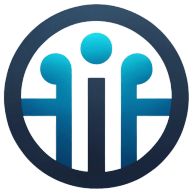How Do You Foster a Culture of Innovation?
Navigating the complexities of fostering a culture of innovation requires more than just a visionary approach; it demands practical strategies that have been proven to work. This article delves into actionable methods suggested by industry experts, aimed at transforming organizations into bastions of creativity and progress. From establishing innovation sandboxes to embracing a 'fail forward' mindset, the insights provided offer a roadmap for leaders seeking to cultivate an environment where innovation thrives.
- Create an Innovation Sandbox
- Form Cross-Functional Innovation Pods
- Implement Dedicated Innovation Sprints
- Encourage Ownership and Accountability
- Integrate AI Tools for Creativity
- Empower Developers to Innovate
- Celebrate Failures with 'Failure Friday'
- Adopt a 'Sandbox' Culture
- Support Experimentation Without Fear
- Dedicate Time for Innovation Sprints
- Showcase Ideas with Demo Day
- Nurture Emotional Intelligence and Recognition
- Leverage Advanced Technologies Like 3D Planning
- Integrate AI for Mental Health Insights
- Allow Freedom and Collaboration
- Embrace Cloud-Based Solutions
- Adopt a 'Fail Forward' Approach
- Encourage Idea Sharing and Collaboration
- Promote Experimentation and Risk-Taking
- Optimize Processes to Drive Innovation
- Host Cross-Functional Innovation Hackathons
- Integrate Data-Driven Decision-Making
Create an Innovation Sandbox
Innovation isn't about forcing creativity-it's about creating an environment where ideas can naturally emerge, evolve, and be acted upon. As a senior digital marketer and eCommerce expert with 7+ years in the tech industry, I've found that the best way to foster innovation within an IT team is to blend structured experimentation with everyday curiosity.
One successful approach we implemented was the 'Innovation Sandbox' model-a dedicated space where teams could test new ideas without the pressure of immediate ROI. We allocated 10% of development time to exploring unconventional solutions for our eCommerce platform, whether it was optimizing site speed, enhancing personalization, or automating repetitive tasks.
For instance, one team experimented with AI-powered dynamic pricing, adjusting product prices in real-time based on demand. After small-scale testing, we saw a 12% increase in conversions, proving that even 'side projects' can turn into major wins.
But innovation isn't just about structured initiatives-it thrives in open, idea-driven cultures. We built a 'Fail Fast, Learn Faster' mindset, where experimentation was encouraged, and failures were treated as learning experiences rather than setbacks. One simple tactic? A Slack channel called 'What If?' where team members casually dropped ideas-some led to groundbreaking features, others sparked insightful discussions.
When teams feel empowered to think, test, and iterate freely, innovation becomes second nature-not a one-time event.

Form Cross-Functional Innovation Pods
As a leader, I've always believed that fostering a culture of innovation isn't about simply introducing new technologies—it's about empowering people to think differently, collaborate effectively, and create solutions that drive meaningful change. For me, innovation thrives where vision, empathy, and practicality intersect.
One of the most successful approaches I've implemented is creating Innovation Pods—small, cross-functional teams dedicated to solving specific challenges. For example, we worked with a hospital struggling with patient intake delays caused by inefficient data capture in their EHR system. Our internal stakeholders collaborated over this innovation pod. Their collective insights helped develop an AI-powered intake form that reduced intake time by 30% and improved data accuracy. This process highlighted how innovation accelerates when diverse expertise is pooled toward a shared goal.
What I've learned is that innovation isn't a single event; it's a culture. It's nurtured by a few key principles. Break down silos—collaboration across disciplines sparks ideas that wouldn't emerge in isolation. Celebrate learning—setbacks are part of the innovation journey and can lead to better outcomes. Connect projects to purpose. When teams understand how their work improves patient care or operational efficiency, their motivation and creativity flourish.
As I reflect on these experiences, I see that fostering innovation in healthcare IT requires us to challenge the status quo while staying grounded in empathy and foresight. By empowering teams and aligning technology with human values, we can drive solutions that not only improve operations but also transform lives.

Implement Dedicated Innovation Sprints
One of the most effective ways I've fostered a culture of innovation within our IT department is by implementing dedicated innovation sprints-short, focused periods where teams can explore new ideas outside of their day-to-day responsibilities.
To make this work, we launched an "Innovation Lab" initiative, giving employees a platform to pitch ideas that could enhance internal processes, optimize infrastructure, or introduce new features. The best ideas receive dedicated development time and leadership backing. One standout sprint led to the creation of an AI-driven automation tool that cut server downtime by 30%, making a huge impact on operational efficiency.
Beyond just structured sprints, we've built a culture where people feel safe to experiment and learn from failures. Regular knowledge-sharing sessions and cross-functional collaborations fuel creativity and keep fresh ideas flowing.
The biggest lesson? When you give IT teams the time, support, and freedom to innovate, they shift from being reactive problem-solvers to proactive change-makers.

Encourage Ownership and Accountability
Fostering a culture of innovation within our IT department at Next Level Technologies involves empowering the team through ownership and accountability. By implementing the philosophy of "Taking Ownership," I ensure each team member feels responsible for their projects, encouraging them to explore new solutions boldly. This approach was pivotal when we helped a manufacturing client in Jackson, OH, innovate their IT infrastructure without a huge investment, leveraging existing assets in creative ways. Encouraging regular collaboration sessions helps us identify untapped solutions and spur innovation. When addressing cybersecurity for our clients, we frequently conduct "war game" exercises, where team members simulate potential threats and responses. This not only improves our preparedness but also sparks innovative thinking about ways to stay ahead of cyber threats, ensuring our clients' security efficiently. We also prioritize building meaningful client partnerships, listening to their unique operational challenges. For instance, a client in the healthcare sector had to navigate complex compliance landscapes; by understanding their specific needs, we developed custom compliance solutions, demonstrating our commitment to continuous improvement and innovation.

Integrate AI Tools for Creativity
In my journey with Ankord Media, fostering a culture of innovation has been about blending strategic creativity with actionable insights. One successful approach has been our integration of AI tools into our creative processes. This has not only increased efficiency and content quality but has also empowered our team to use data for storytelling and brand-building in novel ways. For instance, leveraging AI for customer insights allowed us to tailor branding strategies that significantly improved client engagement. I also implemented a Brand Sprint process that condenses strategy, design, and messaging into a creative workshop. This framework not only accelerates project timelines but also empowers team members to experiment and iterate rapidly. By fostering a supportive environment that encourages taking bold creative risks, we've consistently pushed the boundaries to deliver innovative digital experiences for our clients. Another key driver of innovation has been my role at Ankord Labs, where I mentor startups. By providing resources and guiding founders, we've cultivated a collaborative atmosphere that thrives on exchanging ideas and confronting challenges head-on. This cross-pollination of experiences and insights fosters an ever-present culture of innovation, enabling us to remain at the forefront of the tech and design industries.
Empower Developers to Innovate
Fostering a culture of innovation in my IT department has always revolved around empowering developers to focus on what they do best-building new things. At FusionAuth, we've emphasized outsourcing non-differentiating tasks like authentication to free up our engineers for creative projects. This approach stems from my experience recognizing the efficiencies gained when our team devoted time to pushing our product forward, rather than reimplementing boilerplate functionalities.
A concrete example of this in action comes from our early days with FusionAuth. We realized the opportunity to pivot our focus towards offering developers the tools they needed without them having to interact with sales teams, which aligned perfectly with our vision of developer-first empowerment. Allowing our engineering team to innovate and create without unnecessary problems led to broad adoption and rapid scaling of our solutions.
Our agility as a VC-free company reinforces this culture. Being nimble allows us to adapt swiftly to market needs, like when we transitioned from CleanSpeak to FusionAuth. This flexibility not only supports innovation but also ensures that we're responsive to our customers' evolving requirements, creating a dynamic environment where tech development flourishes.
Celebrate Failures with 'Failure Friday'
We removed the fear of failure. Nothing kills innovation faster than the worry of "What if this flops?" In my team, we celebrate experiments-whether they work or not. Every month, we have a "Failure Friday" where we share things that didn't go as planned and what we learned. It keeps people open to new ideas instead of just playing it safe.

Adopt a 'Sandbox' Culture
First rule of innovation? Kill the fear of failure. If your team is afraid of messing up, they'll never take risks. I encourage a "sandbox" culture-test things, break things, learn fast. Also, keep meetings to a minimum. Seriously. Nothing kills innovation like 10 hours of Zoom calls. Instead, I push for hackathons, open brainstorming sessions, and side projects that aren't tied to immediate KPIs. Some of our best ideas came from casual "What if..." conversations over coffee. Oh, and hire curious people. Skills can be taught but curiosity is priceless, trust me!

Support Experimentation Without Fear
I encourage my team to experiment without fear of failure. For example, we set aside time for "innovation sprints," where developers can prototype ideas outside their regular tasks. One of these sprints led to the development of a reporting dashboard that's now a key feature for clients. The takeaway? Give your team room to think creatively and support them with the resources to bring ideas to life.

Dedicate Time for Innovation Sprints
One of the most effective ways I've fostered innovation at Parachute is by creating dedicated time for it. We set aside "innovation sprints," where teams focus solely on brainstorming and testing new ideas without the usual daily pressures. We also built a sandbox environment where employees can experiment with new technologies in a safe space. This approach has led to practical solutions, like refining our security training modules based on employee feedback and real-world testing.
Encouraging collaboration across different teams has also driven innovation. We host brainstorming sessions that bring together technicians, security experts, and client support staff. This mix of perspectives often leads to unexpected but valuable insights. For example, one of our best security training improvements came from a support team member who suggested simplifying complex cybersecurity concepts for end users. When people from different roles work together, they solve problems in ways no single department could on its own.
Recognizing and rewarding innovation keeps the momentum going. We highlight successful projects in team meetings and acknowledge employees who take smart risks. Incentives tied to creative problem-solving encourage teams to push boundaries while staying focused on meaningful results. Most importantly, as a leader, I stay involved. I join brainstorming sessions, ask questions, and support ideas that show promise. When leadership actively champions innovation, employees feel empowered to think boldly and take action.

Showcase Ideas with Demo Day
Fostering a culture of innovation at Carepatron is all about creating an environment where curiosity and collaboration are encouraged, and people feel empowered to explore new ideas. One of the most successful approaches we've used is our Demo Day initiative. It's a space where the team can showcase creative concepts, prototypes, or even half-formed ideas they've been working on whether individually or collaboratively.
The idea behind Demo Day is simple: it's a dedicated time for experimenting without the pressure of getting things perfect. Every few months, team members present their ideas to the rest of the organization, and we discuss the potential impact or next steps. What makes it work is that there's no such thing as a "bad" idea and that every concept is seen as a building block for something bigger. Some of our most successful innovations, like tools for automating tedious clinical workflows, started as small, unpolished ideas shared during a Demo Day session.
What I've found is that the act of presenting and receiving feedback in a supportive environment not only builds confidence but also inspires others to think creatively.

Nurture Emotional Intelligence and Recognition
Throughout my career, I've learned that fostering a culture of innovation isn't just about adopting new technology; it's about nurturing emotional intelligence and recognizing personal contributions. For example, at Give River, we place a strong emphasis on creating a culture of gratitude and recognition within teams. We found that employees feel more engaged and empowered to innovate when their contributions are acknowledged.
One practical approach was integrating gamification into our daily processes, turning mundane tasks into engaging challenges that inspire creativity. By creating a system where team members earn 'drops' for participation, we motivated them to think outside the box, encouraging a collaborative spirit that often led to breakthrough ideas.
I also advocate for leveraging emotional intelligence to build open communication channels, ensuring every team member feels heard and valued. This creates an environment where innovative ideas can flow freely, resulting in better engagement and innovative outcomes.

Leverage Advanced Technologies Like 3D Planning
In my experience as an executive leader at Sky Point Crane, fostering a culture of innovation in IT involves leveraging advanced technologies like 3D lift planning and integrating them into daily operations. We've applied this method in construction projects, which improved communication and ensured precision. Using 3D technology allowed us to visualize and address potential challenges proactively, leading to timely and efficient project completion.
I also emphasize building meaningful relationships within and outside the organization. By working closely with our partners and clients, we've co-developed unique solutions custom to our customer's needs. For instance, our ongoing improvements in telecom rigging tools have been driven by direct feedback from our telecom partners, resulting in more efficient and safer installations.
Empowerment through skill development is another key aspect. Our team undergoes continuous training, like NCCCO certification and advanced crane operation courses. This not only equips the team with the necessary skills but also sparks innovative ideas to optimize operations. By investing in training, we ensure our team is well-prepared to accept and drive innovation.

Integrate AI for Mental Health Insights
At MentalHappy, fostering a culture of innovation within the IT department began with integrating AI-driven insights into our platform. We used lightweight AI tools to analyze group dynamics and improve participant matching. This not only made our platform more effective but also demonstrated to the team the potential of AI in advancing mental health care.
Another impactful strategy was the incremental rollout of video and chat features. By testing these with smaller user groups first, we maintained consistency and reliability while innovating. This approach reassured the team that innovation doesn't need to compromise core functionality, driving a 30% increase in user engagement.

Allow Freedom and Collaboration
Giving the staff the freedom to try new things and work together is essential to fostering an innovative culture in an IT department. Implementing frequent "innovation sprints," in which team members set aside time to investigate original ideas for particular problems, is one strategy we've found to be effective. For example, the team used AI to automate normal network monitoring activities during one sprint. As a result, team members were encouraged to share and test their ideas, and operations were streamlined. We created an atmosphere where workers felt appreciated and inspired to think creatively by giving them the space, resources, and acknowledgment they deserved for their efforts.

Embrace Cloud-Based Solutions
In my experience at ETTE, fostering a culture of innovation starts with embracing cloud-based solutions to liberate resources and support creative initiatives. We've seen significant cost savings and increased efficiency, allowing our team to focus more on innovation rather than maintenance. For instance, our cloud migration led to operational savings of around 20%, empowering us to allocate budget and time to explore new ideas and technologies.
Another approach I've found effective is focusing on training staff in basic tech troubleshooting and security, fostering a sense of ownership and capability within the team. This empowers employees to experiment with new tools and ideas, boosting confidence and encouraging a proactive mindset. The result is a more resilient and innovative team that continuously seeks improvement and finds creative solutions to complex problems.
I've also leveraged strategic IT consulting to provide our clients with robust, scalable solutions that promote innovation in their operations. By aligning technology with business goals, we help organizations, especially non-profits, maximize their resources and impact. This has built a collaborative environment that thrives on collective problem-solving and inventive thinking, pushing both ETTE and our partners towards continual growth and innovation.

Adopt a 'Fail Forward' Approach
To foster a culture of innovation in my IT department, I've accepted the concept of "fail forward." This approach encourages team members to view setbacks as learning opportunities, promoting a fearless attitude toward experimentation. By integrating this mindset with our AI business advisor, HUXLEY, we support rapid prototyping and iteration, resulting in more groundbreaking solutions.
I focus on cross-departmental collaboration to fuse diverse perspectives, driving innovation. When expanding a diagnostics company in São Paulo, I initiated cross-team projects that merged medical insights with technology, leading to significant operational advancements. This synergy not only improved our problem-solving capacity but also accelerated the adoption of innovative solutions.
My "8 Gears of Success" framework has been instrumental in nurturing a sustainable innovation ecosystem. By embedding empathy, strategic vision, and data-driven decision-making, I ensure that my team not only accepts new ideas but also grounds them in actionable insights. This holistic approach has been key to achieving year-on-year revenue growth and maintaining a competitive edge in industries.

Encourage Idea Sharing and Collaboration
IT departments require formal leadership and targeted innovation programs to build an innovative organizational culture. The environment that encourages.
Encourage Idea Sharing: Hospitality innovation forums and hackathons provide employees with platforms to share ideas.
Invest in Training: Taking a step toward innovation requires that employers give workers new equipment alongside workplace training opportunities.
Reward Creativity: Workforce members who contribute innovative solutions must receive innovation-based recognition from leadership programs.
Cross-Functional Collaboration: The organization needs active collaboration among departments to introduce external views and become more diverse.
Under supportive work environments, staff experimentation platforms bring innovation directly from experiments into everyday operational practices across your business. Your current strategy delivers leading-edge solutions while simultaneously generating advanced employee engagement.

Promote Experimentation and Risk-Taking
Good day,
The IT departments can successfully create and sustain a culture of innovation by promoting experimentation and positive risk-taking. When you strive to build a no-fear environment and allow team members to pitch and experiment with new ideas, your employees will feel challenged to think outside the box and try the impossible. Easing into the adoption of new technologies is one way to do it; you could implement hackathons or innovation sprints where teams work together to solve relevant business challenges using emerging technologies.
Another important method is encouraging cross-functional collaboration. Promoting cross-collaboration between IT and other departments such as marketing, operations, and finance fosters new perspectives and ensures technology solutions meet business requirements. It also creates a sense of co-ownership when it comes to innovation.
Also, continuous learning opportunities are essential. Providing employees with up-to-date tech training, certifications, and industry conferences keeps employees interested and up to speed on emerging advancements. Moreover, acknowledging and rewarding innovative contributions also fosters an environment enriched by creativity and problem-solving.
Lastly, embedding agile and adaptive mindsets enables IT teams to flip with a switch and welcome change. This enables data-driven decision-making, analysis of user behavior, and faster iteration on product features.
Optimize Processes to Drive Innovation
Fostering a culture of innovation at SuperDupr involves leveraging process optimization to drive creativity and efficiency. One key approach I implemented is developing unique process methodologies that streamline our work and improve operational efficiency. This not only boosts team morale but also results in higher client satisfaction, as seen with our work for Goodnight Law where we improved conversion rates significantly by updating their visual design and automating their follow-up processes.
I also emphasize building a diverse team unified by a commitment to innovation and excellence. Our work with The Unmooring digital magazine is a testament to this approach, where our team created a captivating online presence to amplify underrepresented voices. Our data-driven strategies delivered measurable outcomes, enabling them to grow their audience and drive engagement. By valuing diverse perspectives, we're able to push boundaries and stay at the forefront of digital solutions. At SuperDupr, fostering innovation means creating an environment where ideas can flourish freely. I found that empowering my team to collaborate across disciplines brings fresh perspectives that improve our projects. For example, when revamping Goodnight Law's website, we merged creative design and technical automation to boost user engagement, demonstrating how diverse insights can transform outcomes.
One successful approach is integrating data-driven strategies into our operations. We consistently use metrics to gauge effectiveness and motivate the team to innovate further. Our partnership with The Unmooring exemplifies this. By analyzing user behavior, we crafted a website that not only looks appealing but also kept users returning. This data-centric approach encourages continuous learning and adapts to changing market needs, sparking innovation in our IT department.
Building strategic partnerships with top-tier tech providers extends our creative capacity and inspires our team. By leveraging cutting-edge technology and shared insights, we can innovate beyond our current capabilities. This collaborative approach enriches our services and inspires our IT department to think outside the box, driving progress and innovation.

Host Cross-Functional Innovation Hackathons
Fostering innovation in IT requires strategies that promote creativity and collaboration. Encouraging cross-functional teams, such as IT, marketing, and sales working together, can spark innovative solutions. A technology company exemplified this by hosting regular "innovation hackathons," where diverse teams collaborated on specific challenges, resulting in a new real-time data analysis tool that enhanced decision-making across departments.

Integrate Data-Driven Decision-Making
To foster a culture of innovation in my IT department, I've successfully integrated a data-driven decision-making framework. By implementing enterprise-wide analytics solutions in past roles leading $35M+ tech companies, I empowered teams to use actionable data insights for exploring innovative solutions and informed decision-making. This approach encouraged team members to experiment with new technologies by relying on the insights provided, ultimately leading to smarter, data-backed innovations.
In my experience building partnerships with giants like AT&T, AWS, and Cisco, leveraging these partnerships has been pivotal. For example, when founding an educational tech startup, a $250,000 contract with a major school district provided the resources needed to develop unique technological advancements, showcasing the importance of strategic alliances in driving innovation. By fostering relationships with industry leaders, IT teams can access cutting-edge tools and platforms to further ignite creativity and pioneering efforts.
At UpfrontOps, the success as an authorized reseller for over 4,500 global B2B tech brands emphasizes the value of building diverse and broad supplier networks. It facilitates a constant influx of new tools and ideas, allowing teams to think beyond conventional solutions. Such exposure promotes an environment where the latest industry trends are quickly adopted, fostering continuous learning and innovation throughout the organization.





